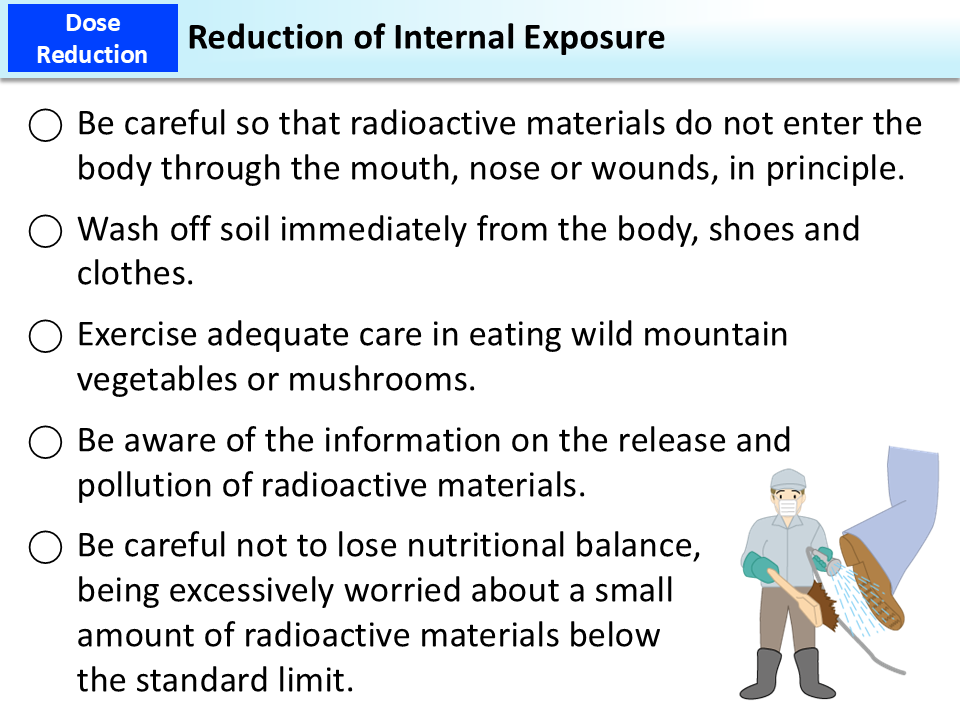Reduction of Internal Exposure
As causes of internal exposure, both intake through inhalation and oral intake through ingestion of foods and drinks need to be taken into consideration. After a nuclear disaster, radioactive materials remaining on the ground pose a problem, but little resuspended radioactive materials exist even immediately after the accident, and become further less over time.1,2,3 Therefore, intake through inhalation of resuspended radioactive materials is scarce.4 Proper daily hygienic control (such as washing hands and taking a bath, etc.) is also effective in reducing internal exposure.
In the meantime, attention needs to be paid to wild foods from which radioactive cesium is detected at high levels. In particular, special attention is required for wild mountain vegetables and mushrooms, which tend to contain cesium at high concentrations. In the aftermath of a nuclear disaster, radioactivity concentrations in foods are inspected by individual prefectures based on inspection plans they formulated in light of the inspection items and the system presented by the national government. Inspection results are released via the websites of the Ministry of Health, Labour and Welfare, the Ministry of Agriculture, Forestry and Fisheries, and individual local governments (p.54 of Vol. 2, “Publication of the Inspection Results Concerning Radioactive Materials in Foods”).
Regarding internal exposure due to radioactive cesium, simple measurement services are available for residents to measure radioactive cesium concentrations in wild mountain vegetables and mushrooms and for home-grown vegetables. Residents can also measure internal exposures using a whole-body counter (WBC).
- IAEA-TECDOC-1162 “Generic procedures for assessment and response during a radiological emergency” (2000)
- K. Akimoto: Jpn. J. Health Phys., 49(1): 17-28, 2014.
- K. Akimoto: Health Phys., 108(1): 32-38, 2015.
- UNSCEAR 2020/2021 Report
- Included in this reference material on March 31, 2013
- Updated on March 31, 2024

